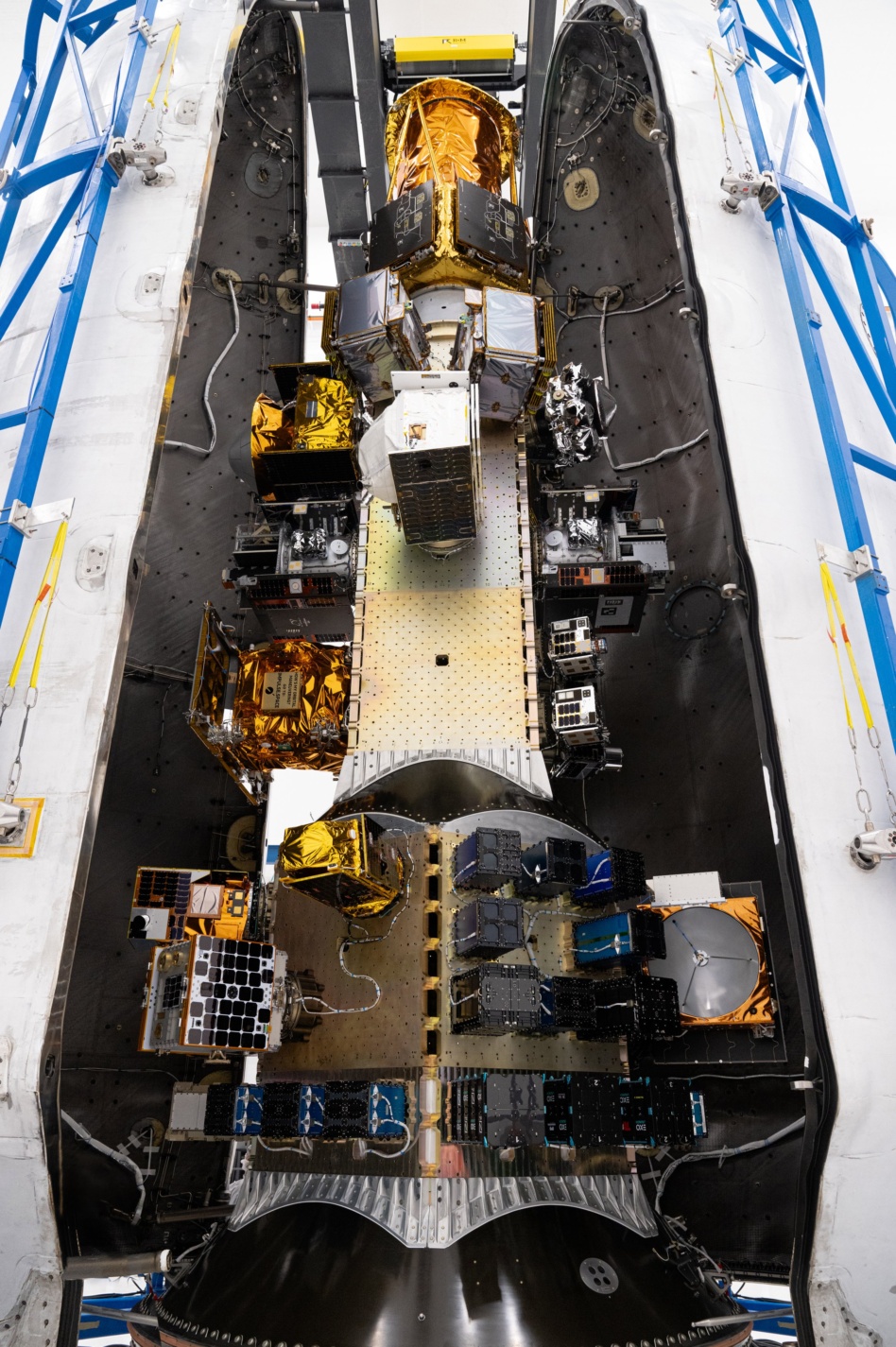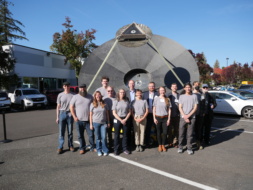SpaceX launched Transporter-12 on Tuesday afternoon, sending 131 payloads with dozens of microsatellites and nanosats into sun-synchronous orbit.
The rideshare mission launched from Vandenberg Space Force Base in California. Here’s a roundup of some of the companies and missions hitching a ride into space:
Plasma pioneer: Varda Space’s second orbital processing and reentry capsule, W-2, launched aboard Transporter-12 with a payload from the AFRL that plans to record spectral measurements of the dynamic reentry plasma environment.
W-2 also includes a heat shield developed in collaboration with NASA’s Ames Research Center, named C-PICA, that will be put to the test when it heads back to Earth, landing for the first time at Koonibba Test Range in South Australia.
Picture perfect: Transporter-12 included a number of imagery payloads, demonstrating the increasing relevance of observation technologies:
- Planet launched its latest high-res satellite, Pelican-2, which will capture 40-cm resolution data using NVIDIA’s Jetson platform with a goal of reducing high-res data delivery time from hours to minutes. Pelican-2 launched with 36 SuperDove sats to replenish its other high-res fleet, SkySat.
- Pixxel, a hyperspectral imaging company, launched the first three sats of its Firefly constellation, which is expected to provide data by March.
The best of the rest: Here are our quick hits for some of the other payloads on board the rideshare mission:
- Exolaunch integrated 35 sats from 17 countries on Transporter-12, bestingTransporter-11 as its largest mission to date. Some of the payloads flying aboard include TRLSpace and TU Berlin’s TROLL, Endurosat’s Balkan-1, and OroraTech’s Forest-3 cubesat. These satellites have all sorts of goals—from wildfire detection to AI-powered detection capabilities.
- Tyvak International of Milan’s SAT GUS sat will allow people to send selfies to space and snap a pic with the Earth in the background as part of the “Space Selfie Project.”
- Spire launched six LEMUR satellites, two of which were developed in collaboration with Myriota. The sats aim to expand global IoT coverage for various sectors in the US, Europe, and Latin America. Three of the six satellites are equipped with advanced atmospheric sensors to help Spire monitor weather and maritime traffic.
- Digantara, an Indian space surveillance startup, launched its first mission to track objects in space.
- Inversion launched its re-entry vehicle, Ray, which will be in LEO for weeks before re-entering—collecting valuable data for its future re-entry vehicles.
Correction: This story has been updated to correctly reflect how many of Spire’s satellites were developed with Myriota and update name of Varda’s second space capsule.




